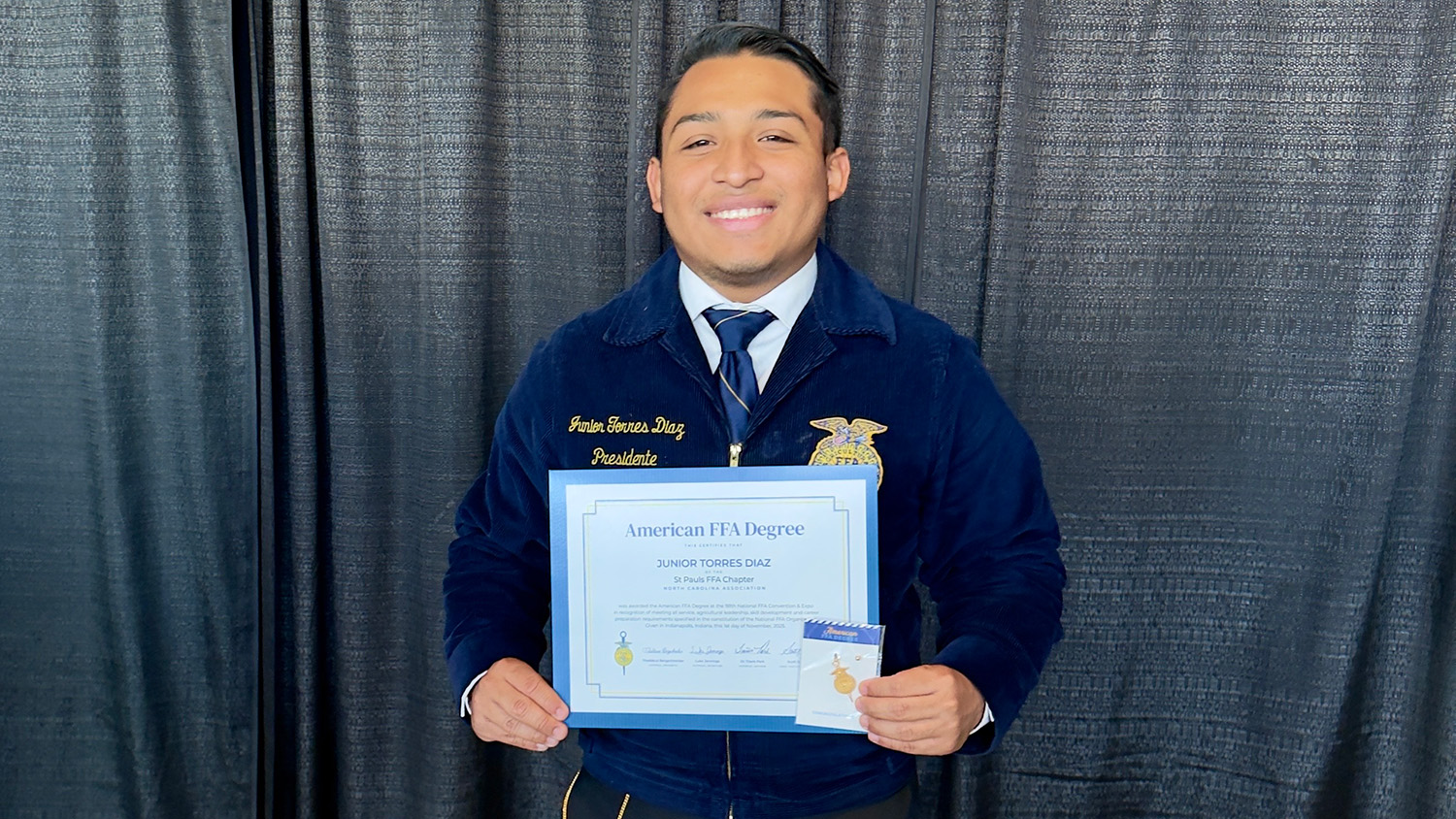New Aquatic Conservation Laboratory Opens at Yates Mill
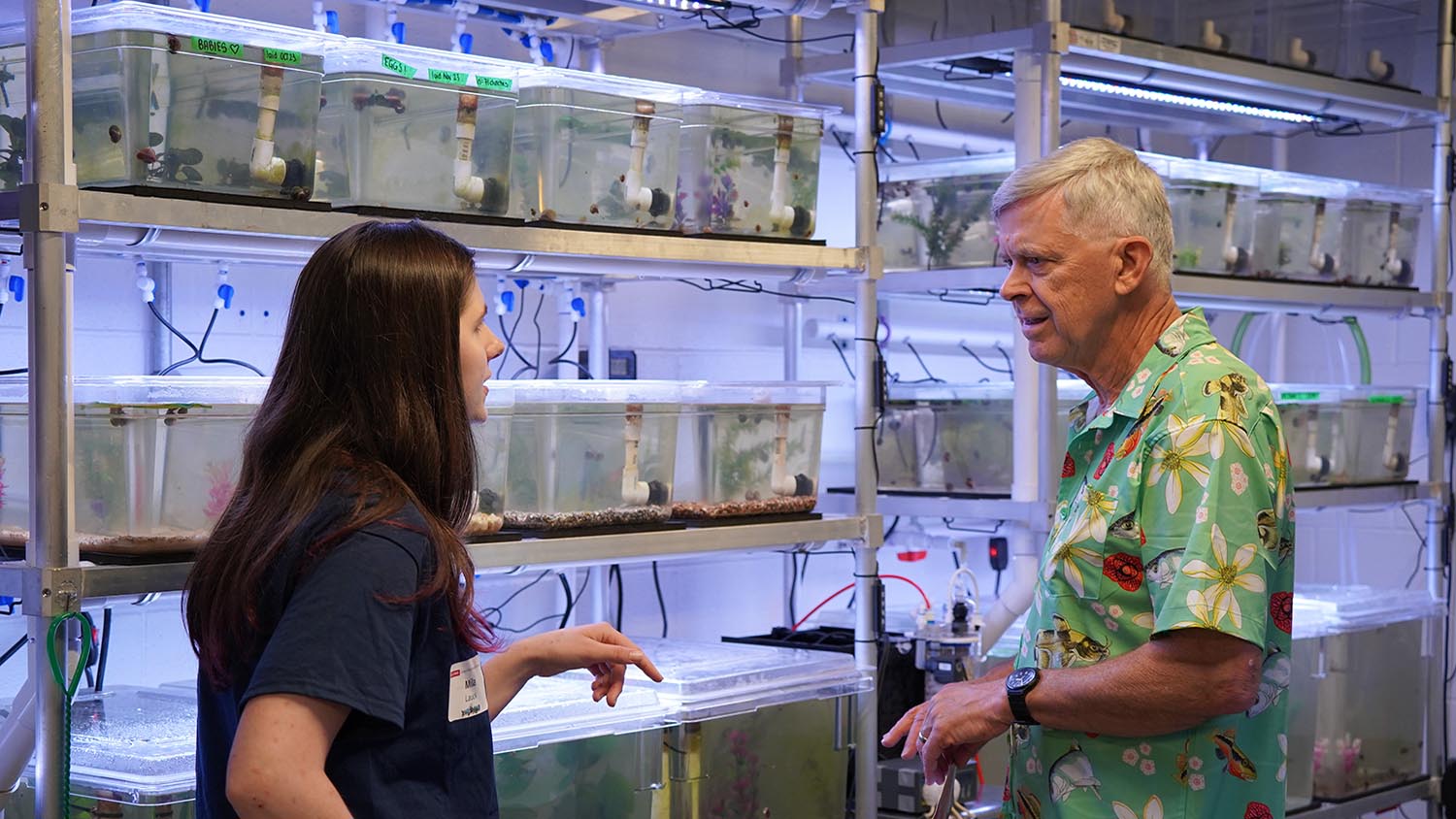
The environment just got a little more hospitable for some threatened and endangered aquatic species in North Carolina — like the Magnificent Ramshorn snail, Carolina Madtom fish and Neuse River Waterdog salamander — thanks to the grand opening of the Yates Mill Aquatic Conservation Laboratory located at Historic Yates Mill County Park in Raleigh.
Greg Cope, a professor of applied ecology and director of the Yates Mill Aquatic Conservation Laboratory, said the North Carolina Department of Transportation (NCDOT) provided funding for the facility in conjunction with the construction of the southern portion of I-540, which disturbed the habitats of several vulnerable aquatic species. NCDOT is specifically funding propagation and research at the laboratory involving six aquatic species impacted along the Tar and Neuse river basins. The species include:
- Magnificent Ramshorn snail
- Carolina Madtom fish
- Dwarf Wedgemussel
- Yellow Lance
- Atlantic Pigtoe
- Neuse River Waterdog salamander
A partnership of NC State University’s Department of Applied Ecology, NCDOT, the North Carolina Wildlife Resources Commission, the U.S. Fish and Wildlife Service, and Wake County, the laboratory aims to conduct propagation, research, education and outreach in support of imperiled aquatic species conservation in North Carolina.
Research is already underway at the facility with a robust population of Magnificent Ramshorn snails and several of the mussel species thriving in the lab’s network of tanks.
In addition to propagation, research and education efforts, Cope said the laboratory is assisting in establishing an Imperiled Species Water Quality Monitoring Network in conjunction with the U.S. Fish and Wildlife Service, the North Carolina Wildlife Resources Commission and the North Carolina Department of Environmental Quality.
“That will support long-term water quality measurements in the priority habitat that we have for putting these organisms back out in the environment,” Cope said.
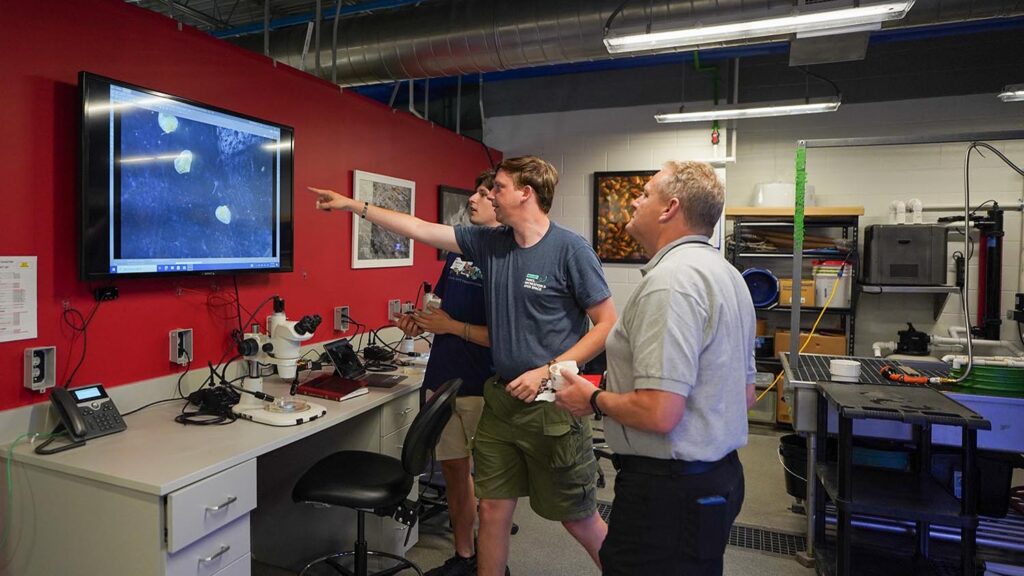
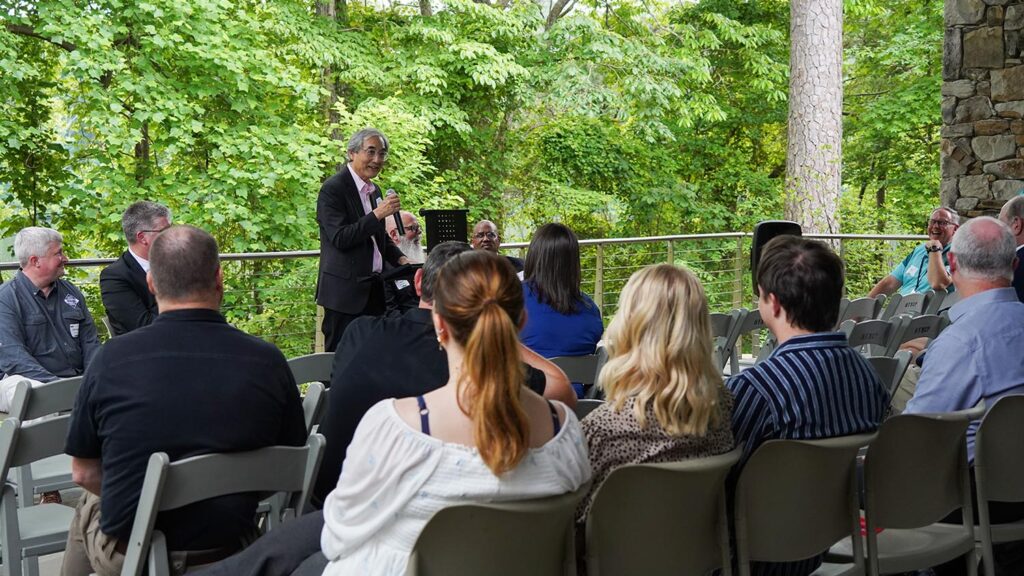
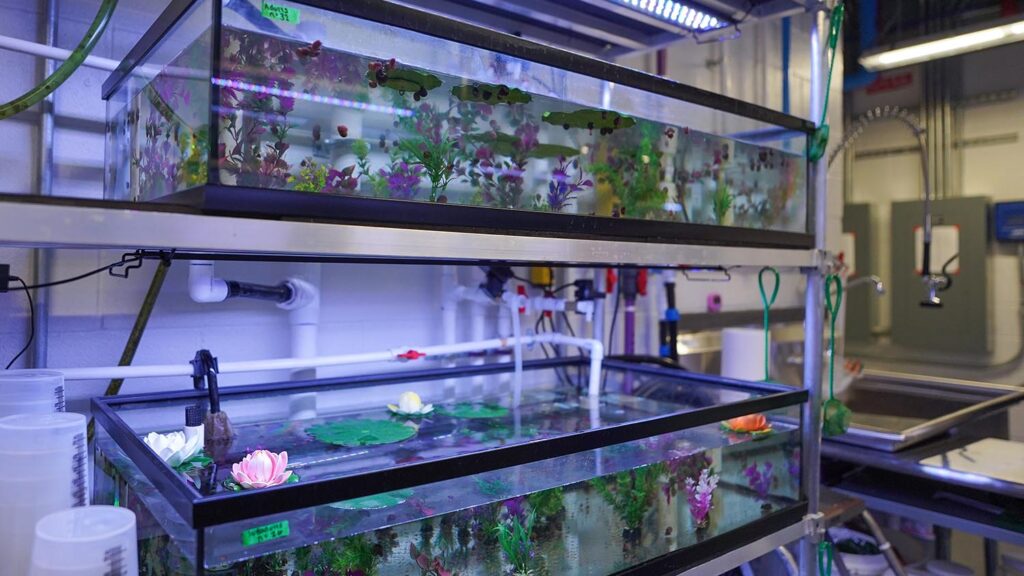
A renovation of the NC State University research wing in the park’s A.E. Finley Center created space for the new lab, where officials gathered on May 17 to celebrate the opening of the laboratory — a milestone that many said is a game changer for aquatic conservation in the region.
“The mission of the (North Carolina Department of Transportation) is to connect people, products and places safely and efficiently with a customer focus, accountability and environmental sensitivity to enhance the economy and vitality of North Carolina,” said Lamar Sylvester, chief engineer with NCDOT. “By being a partner in this facility, NCDOT is meeting its mission by helping conserve threatened and endangered species through research and propagation.”
David Andow, head of the Department of Applied Ecology, said that the cutting-edge laboratory will be key in preserving native species and the natural environment of the Tar Heel State, and is “one of the best laboratories for this type of work in the world.”
In total, the facility consists of approximately 4,400 square feet of both indoor and outdoor research and production space as well as an 800-square-foot pump house. Besides the primary wet lab, an additional classroom, office and laboratory for in vitro mussel propagation will allow for a variety of research and educational opportunities.
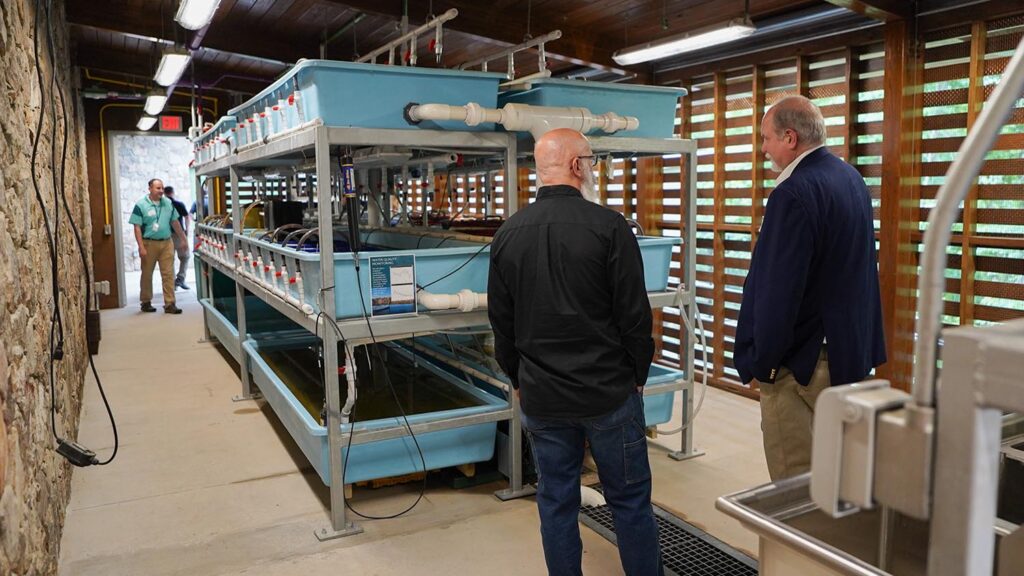
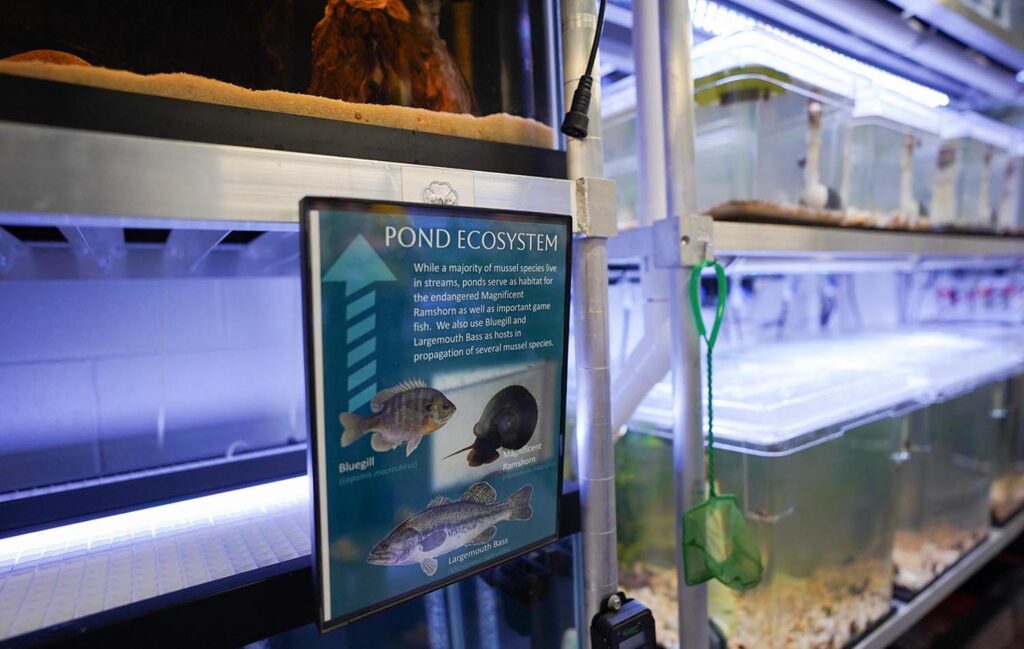
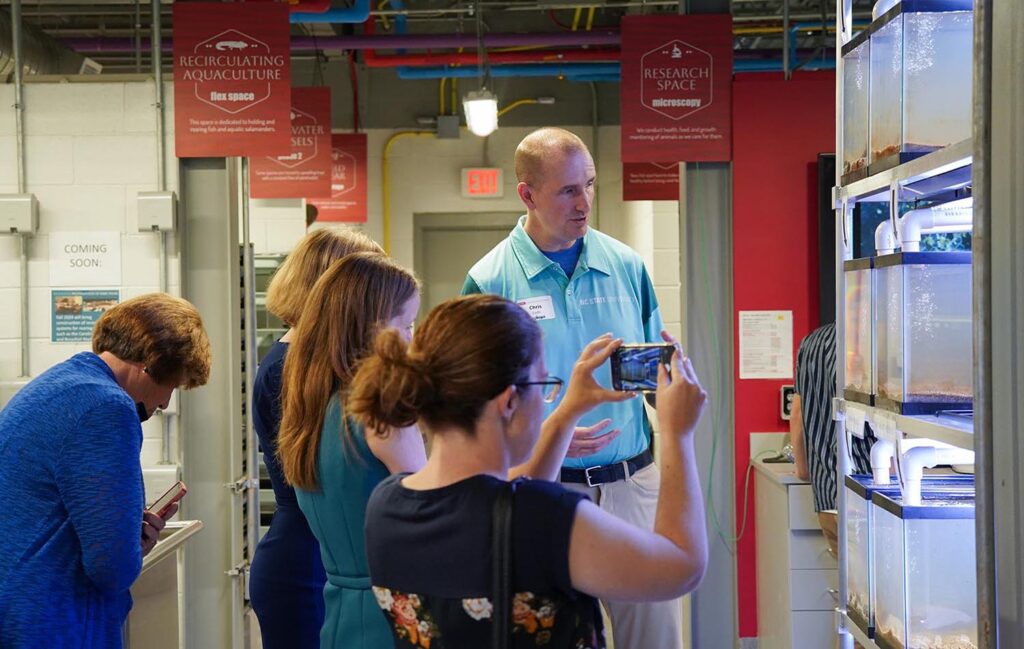
Garey Fox, dean of the College of Agriculture and Life Sciences, said the new laboratory is the perfect example of serving the college’s land grant mission of research, teaching and Extension and the university’s “Think and Do” spirit.
“And when you think about what this laboratory is going to do, it’s going to think and do across all three of those missions,” Fox said. “Think about the environmental education and the aquatic conservation programs that will be done in this great facility.”
With so much momentum and support behind the laboratory, its work is poised to make a big difference in the years to come.
“It’s really important that we make sure all these natural gifts that we have are preserved,” said Wake County Board of Commissioners member Susan Evans, adding, “Our natural habitats really are some of the most supportive partners for us, and I’m so glad that species like the endangered Dwarf Wedgemussel will get the attention they deserve here.”
“I think the facility will become crucial to our ability to hold species, to do propagation, to do additional research and support the species that we see as critical in the future,” said Christian Waters, chief of the Inland Fisheries Division of the North Carolina Wildlife Resources Commission. “We look forward to the continued partnership that we’ve had with all the partners and the fact that this facility is going to contribute to the future conservation and hopefully recovery of a variety of species.”
- Categories:

